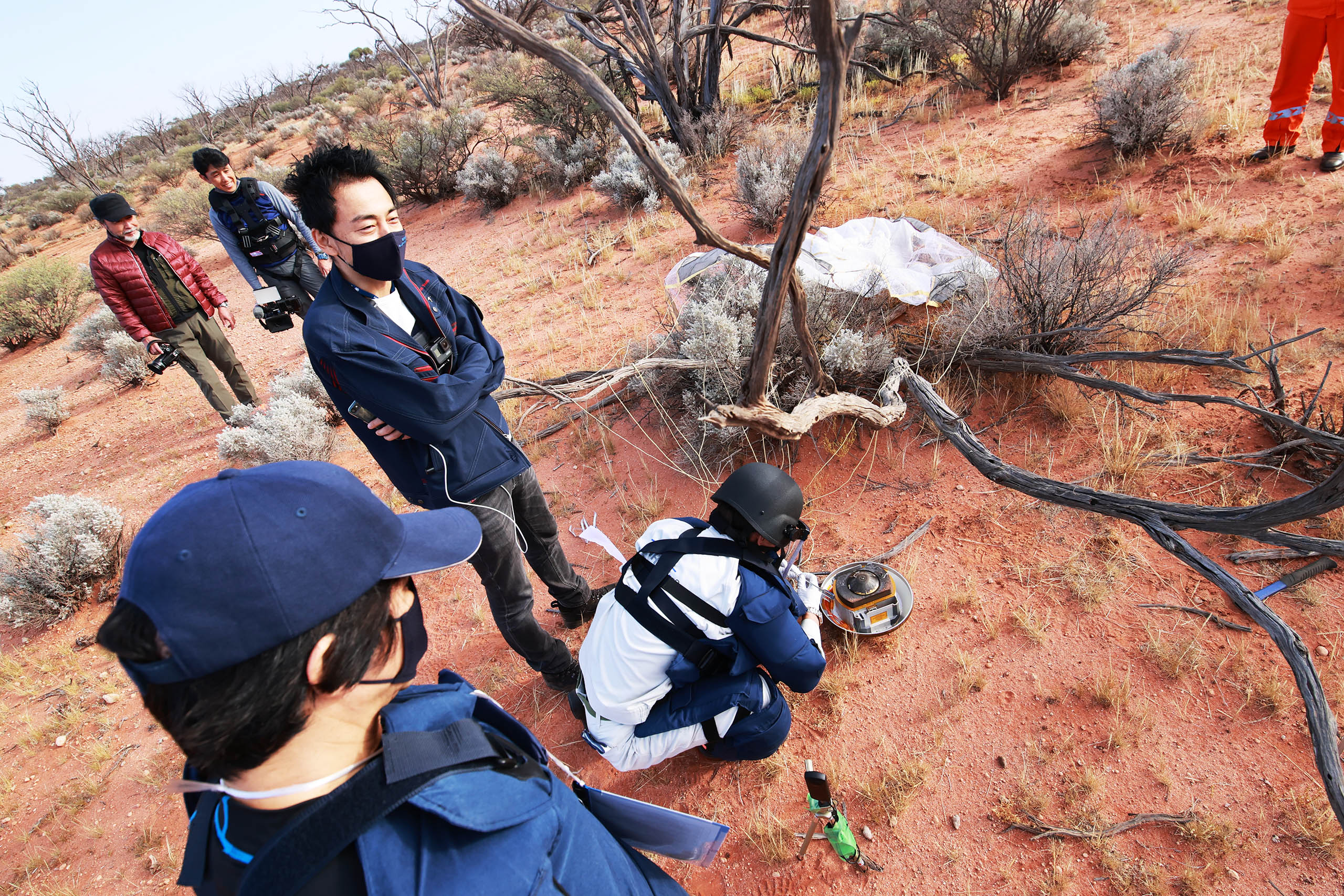Japanese scientists get first peek inside Hayabusa2 asteroid sample-return capsule
Time to see what the "treasure box" holds.
A large number of particles are confirmed to be in “sample chamber A” inside the collected capsule (~11:10 JST on 12/15). This is thought to be the sample from the first touchdown on Ryugu. The photo looks brown, but our team says “black”! The sample return is a great success! pic.twitter.com/34vIx17zOXDecember 15, 2020
Japanese scientists have gotten their first look inside the sample capsule of the Hayabusa2 spacecraft, and even the first glance is promising.
The Hayabusa2 spacecraft launched in 2014, bound for a near-Earth asteroid called Ryugu. The mission arrived at Ryugu in 2018 and spent about a year and a half observing and sampling the asteroid before leaving last year to deposit its sample capsule in Earth's atmosphere. On Dec. 5, that capsule landed in the Woomera Prohibited Area in Australia; scientists with the Japan Aerospace Exploration Agency (JAXA), which runs the mission, then flew the capsule to Japan.
On Monday (Dec. 14), mission personnel got their first look inside the capsule. "We confirmed black grains thought to be from Ryugu were inside," mission representatives wrote on Twitter. "This is outside the main chambers, and likely particles attached to the sample catcher entrance."
Related: Japan's Hayabusa2 asteroid Ryugu sample-return mission in pictures
The sample container inside the re-entry capsule was opened on December 14, and we confirmed black grains thought to be from Ryugu were inside. This is outside the main chambers, and likely particles attached to the sample catcher entrance. (English release available tomorrow) https://t.co/NAw1R1cjvy pic.twitter.com/5BfXxfH29hDecember 14, 2020
Scientists later opened one of the three sample chambers and confirmed that it contained a fair amount of asteroid dust. Those chambers hold the real treasures: they are where the Hayabusa2 spacecraft directed the pieces of Ryugu it snagged during two collection maneuvers.
During one of those sampling attempts, the spacecraft grabbed rocks from the asteroid's surface; during the second, it shot a copper bullet into the asteroid to uncover subsurface material. The combination should allow scientists to understand how the harsh environment of space has affected the surface of Ryugu.
Another early procedure conducted on the newly-returned capsule was to measure gases trapped inside it in case some of that gas originates from Ryugu itself.
Get the Space.com Newsletter
Breaking space news, the latest updates on rocket launches, skywatching events and more!

JAXA has not yet announced when scientists will begin analyzing the asteroid bits in earnest. Despite Earth's sophisticated fleet of spacecraft, analyzing bits of other worlds in terrestrial labs still gives scientists much more powerful ways to address planetary science questions.
Because asteroids are primordial rubble left over from when the solar system formed, scientists hope that studying these samples of Ryugu will help them understand the early days of the solar system.
Email Meghan Bartels at mbartels@space.com or follow her on Twitter @meghanbartels. Follow us on Twitter @Spacedotcom and on Facebook.
Join our Space Forums to keep talking space on the latest missions, night sky and more! And if you have a news tip, correction or comment, let us know at: community@space.com.

Meghan is a senior writer at Space.com and has more than five years' experience as a science journalist based in New York City. She joined Space.com in July 2018, with previous writing published in outlets including Newsweek and Audubon. Meghan earned an MA in science journalism from New York University and a BA in classics from Georgetown University, and in her free time she enjoys reading and visiting museums. Follow her on Twitter at @meghanbartels.









